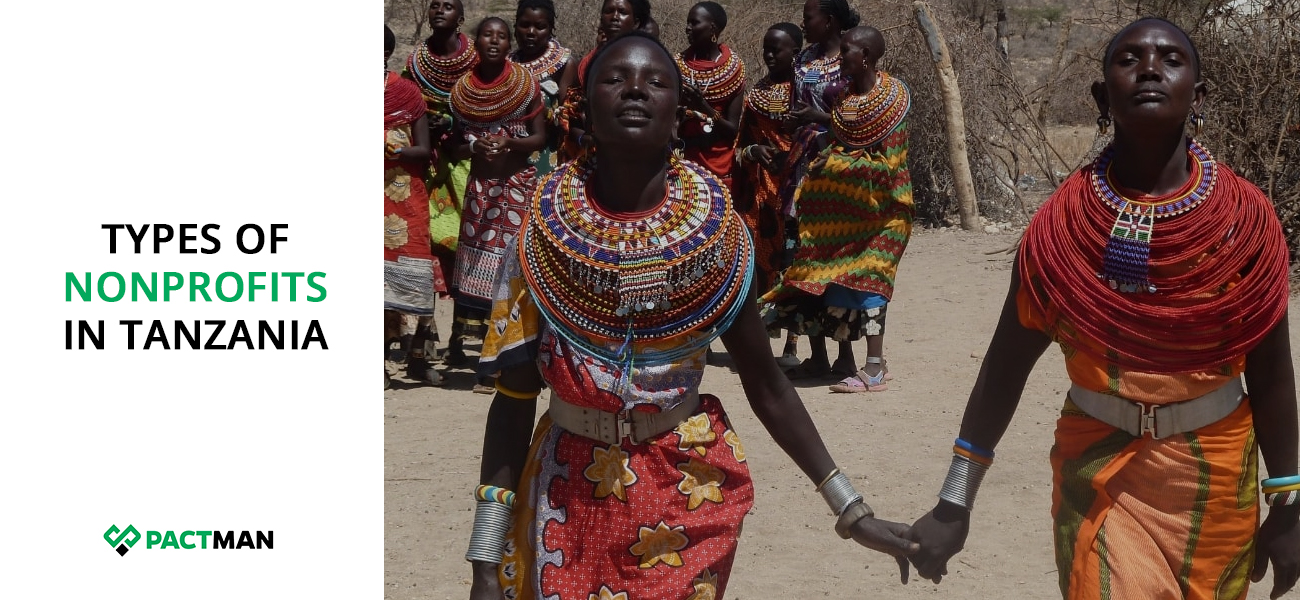Tanzanian history of nonprofits predates the nation’s independence. Hence, some of the various types of nonprofits continue to operate based on these precinct laws.
The country is made up of two jurisdictions. This includes mainland Tanzania (previously Tanganyika) and the former People’s Republic of Zanzibar. The statutory policies of both provinces are founded on the English common law system. However, Zanzibar further makes room for Islamic and customary laws.
In this article, we will outline the various types of nonprofits that exist in the country and their operations.

- Tanzania, like most African nations, lacks a comprehensive social security system
- A large number of nonprofits in the country constitute small membership groups of about 51 and 100 people
- The nonprofit sector in Tanzania is largely donor dependent for its revenues
What are the types of nonprofits in Tanzania?
The Council on Foundations lists three major types of nonprofits in Tanzania. These nonprofits are distinct within each region and unique in their operations.
1. Non-governmental organizations (NGO):
NGOs function in the region of mainland Tanzania. These types of nonprofits operate as voluntary, self-governing, not-for-profit organizations. Hence, they serve the benefit of the public. This could be in the area of economic, social or cultural development.
NGOs in mainland Tanzania are also known to promote law and order, good governance, and human rights. However, these types of nonprofits can only take part in non-partisan activities that promote the welfare of the community.
2. Societies:
Societies primarily function in the Zanzibar region of Tanzania. Although NGO is a popular term in the region, Zanzibar does not have a legal framework guiding NGOs. Nonprofits are registered under the Societies Act which does not have the term NGO in its law.
These types of nonprofits are said to most likely receive donor support. Also, the law governing Societies does not prohibit nonprofit members from being involved in commercial activities.
3. Company limited by guarantee:
These are nonprofit entities with members’ liability limited by memorandum. Therefore, CLGs are not granted access to distribute dividends to their members.
Companies limited by guarantee are allowed to perform commercial activities. However, the income generated from these types of nonprofits is geared towards promoting the company’s objectives.
What are the legal framework governing the types of nonprofits in Tanzania?
Tanzanian nonprofit laws partly stem from common law origins and are primarily statutory. Some of the laws guiding the various types of nonprofits were effected during the colonial period. Hence, it can be said that there is still an absence of a single body of law in Tanzania for the different classes of nonprofits.
The mainland region of Tanzania and Zanzibar possess similar laws in several areas. However, each government principally adopts different laws for its jurisdiction.
How many nonprofits are in Tanzania?
The Global Philanthropy Tracker revealed in its report that Tanzania has over 8,000 NPOs in the country. The civil society sector accounts for over $260 million in expenditure. This makes up about 2.9% of the country’s GDP.
Also, an international academic research shows that a large number of nonprofits in Tanzania constitute small membership groups of about 51 and 100 people. This is followed by member category between 11 and 25 people. A small fraction of nonprofits has over 5000 members.
The nonprofit sector in Tanzania is largely donor dependent for its revenues. Over 42% of revenue from the sector is gained from outside the country.
Also, the distribution and concentration of nonprofits in Tanzania reveal that rich regions have a higher concentration of NGOs eg Dar Salaam, Kilimanjaro and Arusha. Poor regions such as Lindi, Singida and Tabora, have small numbers of NPOs. This indicates that NPO distribution in the country is based on factors such as development and easy accessibility in the regions.
Conclusion
Tanzania, like most African nations, lacks a comprehensive social security system. With the high poverty rate, nonprofit entities are a crucial tool in addressing the various societal ills in the nation.
Infants and women continue to die of easily treatable diseases. However, the sector has largely contributed to addressing some of the health issues in the country.
The establishment of several hospitals by NGOs has led to an increase in the number of charity health facilities. These infirmaries have gone as far as outnumbering the government-established hospitals. Christian clinics make up a large number of voluntary agency health facilities.
However, there is still more to be done in the area of advocacy, especially with the emergence of new pandemic diseases.
If you enjoyed reading this article but still have questions for us, please share your questions in the post section.
